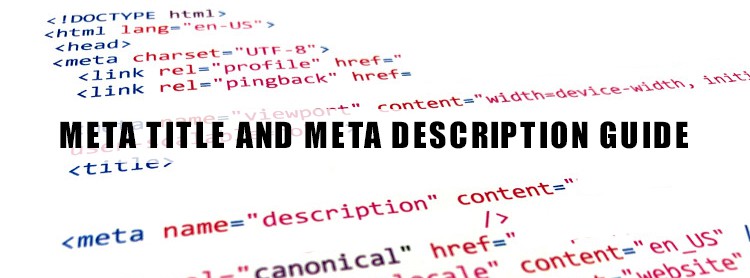- HOME
- CHECKOUT / CART
- LOGIN / REGISTER
- LINK BUILDING
- SEO
- SEO Packages
- Small Business SEO
- Corporate Enterprise SEO
- eCommerce SEO
- Local SEO Services
- SEO Case Studies
- Google Maps Marketing
- Google My Business Management
- Unnatural Links Penalty Recovery
- Shopify SEO
- SEO Consulting
- SEO Reseller Program
- SEO Affiliate Program
- Video SEO Optimization
- WordPress SEO
- WIX SEO Services
- OTHER SERVICES
- RESOURCES
- ABOUT
- About Us
- Why Us
- Testimonials
- INDUSTRIES
- Cannabis CBD Marketing and SEO
- Carpet Cleaning Marketing and SEO
- Cell Phone Repair Marketing and SEO
- Dental Marketing and SEO
- Drug Rehab Treatment Centers Marketing and SEO
- HVAC Marketing and SEO
- Junk Removal Marketing and SEO
- Law Firm Marketing and SEO
- Law Firm Website Design
- Marketing for Arborists and Tree Service Companies
- Medical and Healthcare Marketing
- Plastic Surgeons Marketing and SEO
- Plumbing Marketing and SEO
- Private Detectives / Investigators Marketing and SEO
- SaaS Marketing and SEO
- Strippers Marketing and SEO
- CONTACT
Meta Title and Meta Description SEO Guide |
Meta Title and Meta Description SEO Guide
The phrase that appears on search engine result pages and browser tabs to identify the topic of a webpage is referred to as a meta title. However, the meta description’s purpose is to give readers a quick synopsis of the material on your website so they can figure out whether it’ll answer their inquiry.
Continue reading to learn more about meta titles and descriptions and how to write them appropriately.
What is the Purpose of a Meta Title Tag?
An HTML element found on a webpage that informs search engines about the page’s title is known as the meta title tag. The title tag is designed to represent the page’s content appropriately, and Google uses it as a clickable headline in the SERPs while showing the results.
Since search engines examine these titles to explore your page’s topic and rank it, accordingly, writing an excellent meta title is critical to maintaining effective SEO techniques and ranking in organic searches.
Consider meta titles as the tabs in a library card catalogue. A search engine is a well-organized index of data, and meta titles are the systematically placed cards within that index.
Google has, however, lately changed the method it gets the titles for its search results page. According to Google’s recent release, the SERP titles are shown 13 percent of the time utilizing text within heading elements rather than HTML titles.
The search engine behemoth has stated that it prefers to use titles that users can see rather than titles that only bots can see within a page.
Why Does Google Disregard Your Meta Titles?
Google sometimes refuses to utilize title tags because they have errors. Long, difficult-to-read titles, titles loaded with keywords to deceive readers into visiting the page, and templated titles with no helpful meaning, such as “untitled,” “home,” etc, are all faults that will cause Google to ignore your meta title.
The pleasure of visitors visiting the sites mentioned on the SERPs is always a priority for Google. It is how all their affiliated businesses operate, and they do not want users to leave with a negative image.
SEOs have been tinkering with Meta titles to change Google’s search results for a long time. Most of the time, keywords were crammed into pages to grab readers’ attention, but when they arrived at the page, the content failed to match their genuine goal.
Google wants only the most relevant titles to appear since the title displayed on the search results page is essential in a user’s decision to visit a website.
What is Google’s Current Method for Generating Titles?
Google got its mind upon how it would produce titles for websites with bad HTML titles on August 24, 2021.
According to the statement, Google has included a new mechanism into its algorithm that generates titles from the text on a website that visitors may view once they arrive.
Previously, Google would update the title based on the user’s search input. However, Google has stated that with the launch of this new system, it would no longer adjust titles depending on inquiries because the new algorithm can produce better titles.
According to Google, any content indicated within a Heading element, particularly H1s, has a higher chance of appearing in SERPs. However, other headings and even text within the body may arise if it represents the page’s objective better.
When the Meta titles are less relevant, Google’s goal with this new update is to develop legible and instructive titles for consumers.
In addition, if a title is more extended than Google can display, it will just show the relevant portion to viewers rather than pushing it to the beginning and truncating the title.
What is the Ideal Character Length for a Meta Title?
Although Google no longer has an official meta title length limit, it is customary best practice to keep titles to 50-60 characters to prevent getting shortened and added with a “…” in the SERPs. Crucial contextual information may be hidden from the searcher’s perspective.
With mobile searches outnumbering desktop searches, paying attention to how one appears on mobile devices is critical.
How is a Meta title Extremely Important in SEO for any Blog or Business Website?
A meta description is a supplemental content that displays in SERPs and informs readers about the link.
Your meta description gives consumers the information they need to determine if your content is relevant to their search and, ultimately, whether to click on your content.
The maximum length of this meta description has increased, presently hovering around 300 characters, implying that it intends to provide users with more information about what each result will provide.
As a result, your meta description should include the long-tail keyword for which you are attempting to rank and be reader-friendly, engaging, and relevant.
What are some tips to help you Optimise your Meta Title?
- For SEO purposes, ensure to include the target term in the title tag. An essential on-page SEO indication is the title tag.
- Overall, a title tag that starts with the keyword performs better than one that ends with the keyword.
- It’s perfectly fine if your Meta Title and H1 are different. The H1 tag is used by Google as a supplemental signal to determine subject relevance.
- Google gives Links from pages with your focus keyword in the headline more weight.
- Remember not to jam keywords into your meta title; it may punish your website if Google finds them.
Why does Google Change the Meta Title?
It’s thought that Google was adjusting titles since the title and the content didn’t match.
This corresponds to Google’s explanation of what it considers and attempts to accomplish when creating search result snippets. Google expects the snippet and title’s purpose to depict best and describe each result and explain how it pertains to the user’s query.
The aim for Google is for the whole search result snippet, including the title, to accurately represent what consumers will discover on that page.
While it analyses the title and description you provide, it also evaluates other information on the page, connections to the page from other websites, and structured data when deciding what appears in your snippet.
If the other indications indicate that the title you created doesn’t effectively represent your content, Google can automatically update the title in your snippet to something more appropriate.
What is a Meta Description Tag?
The meta description is a web page’s HTML element that explains the page’s content. The meta description should appear in the SERP along with the meta title.
A decent meta description increases click-through rates, which helps Google figure out if you’re providing a solid result.
How Many Characters Should a Meta Description Tag Be?
Meta descriptions can be any length. However, Google often truncates them to 155-160 characters. It’s ideal for maintaining meta descriptions between 50 and 160 characters long to keep them appropriately detailed.
Remember that the perfect duration will vary based on the scenario, and your primary objective should be to give content and generate clicks.
What is the Meta Description’s Importance?
Meta description tags may significantly influence how well your website ranks in search engines. Your meta description acts as the original advertisement for your text.
Google and other search engines will frequently display the meta description as a page summary when your ad ranks for a term. As a result, the meta description is just as crucial as the ad content.
An intriguing meta description has the potential to increase your organic search results’ click-through rate.
How do you Construct an SEO-Friendly Meta Description and Title?
With recent Google algorithm adjustments focusing on content, context, and relevance, the value of excellent material as a ranking standard has been reaffirmed.
The two SERP characteristics that SEOs abused were the Meta Title and Description. Keywords in the title and description may not produce the same effects as a few years ago for SEOs.
Google’s search results place a greater emphasis on context, relevance, and user involvement. Therefore, it’s critical to tailor the title and description of your page to the information on the page.
While keywords are still important, they are now intertwined with context and relevancy. If the Meta Title and Description provide the best answer to the search query, your page’s visibility on the SERP will be boosted.
When does Google Rewrite the Meta Title and Meta Description?
During the recently finished Webmaster Summit, Google’s Gary Illyes stated that Google is only obliged to rewrite the meta title in the worst-case scenarios. The number of times Google does so is few.
Only when a website tries to give Google visitors a completely different tale than what is on the page does Google rewrite the titles and descriptions. Google is aware that it does not want to lead its readers to a misleading website. Thus, it uses the words inside the page’s content to produce titles and descriptions.
If Google is doing the same thing with some of your sites, it may be time to change the existing Meta Title and Description. The most common cause of Google rewriting is over-optimization of the title and description.
Our locations and Services:
Find us on Google maps for directions: Digital Marketing | SEO Las Vegas, Digital Marketing | SEO New York, Digital Marketing | SEO Phoenix, Digital Marketing | SEO Houston, Digital Marketing | SEO Atlanta, Digital Marketing | SEO Anaheim, Digital Marketing | SEO Alexandria, Digital Marketing | SEO Austin, Digital Marketing | SEO Calabasas, Digital Marketing | SEO Cleveland, Digital Marketing | SEO Corpus Christi, Digital Marketing | SEO Dayton, Digital Marketing | SEO Detroit,Digital Marketing | SEO Fort Worth, Digital Marketing | SEO Henderson, Digital Marketing | SEO Indianapolis, Digital Marketing | SEO Irvine, Digital Marketing | SEO Jersey City, Digital Marketing | SEO Knoxville, Digital Marketing | SEO Long Beach, Digital Marketing | SEO Los Angeles, Digital Marketing | SEO Medford, Digital Marketing | SEO Mesa, Digital Marketing | SEO New Orleans, Digital Marketing | SEO Palmdale, Digital Marketing | SEO San Jose, Digital Marketing | SEO Santa Clarita, Digital Marketing | SEO Santa Monica, Digital Marketing | SEO Scottsdale, Digital Marketing | SEO Sherman Oaks, Digital Marketing | SEO Seattle, Digital Marketing | SEO Tacoma, Digital Marketing | SEO Torrance

By placing an order, signing up for services from Marketing1on1 LLC or using this website you agree to Terms and Conditions and Privacy Policy
Copyright © Marketing1on1 LLC All rights reserved.
The content of this web site may not be copied, replaced, distributed, published, displayed, modified, or transferred in any form or by any means except with the prior permission of Marketing1on1 LLC.
Copyright infringement is a violation of federal law subject to criminal and civil penalties.
Blog | Accessibility Statement





